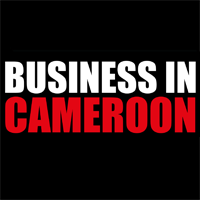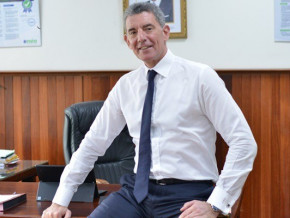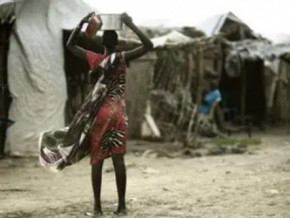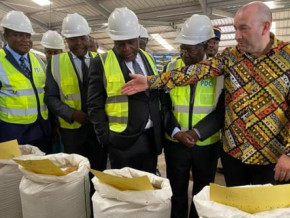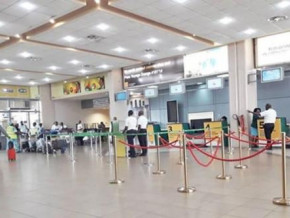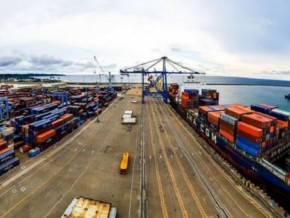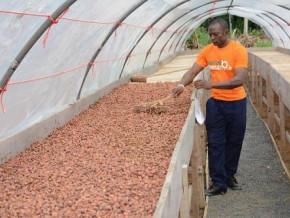
Cameroon: a vast diamond potential
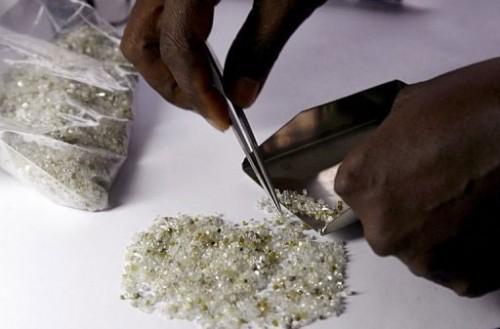
(Business in Cameroon) - Officially, the artisanal alluvial diamond is around five million carats per year, but the actual amount of diamond conglomerate is yet to be figured out.
The Korean company C and K Mining stated that Cameroon had the largest diamond reserves in the world (736 million carats). These figures have created a controversy as the claims of C and K Mining were not based on solid research. Cameroonian authorities have no exact figures of the country’s real diamond potential. But officially, there is talk of a potential of 5 million carats of alluvial diamonds and diamond conglomerate. This is why the country has initiated studies to determine its real potential, especially at Mobilong, east of the country where an exploitation license has been granted to C and K Mining, a joint venture of a South Korean company and the Cameroonian Government.
Some certitude
However, on August 21, 2012, the Minister of Industries, Mines and Technological Development, Emmanuel Bonde, said “our pool lies between the Central African Republic and the Republic of Congo, two diamond-producing countries. The presence of alluvial diamonds in this area is an indication of the existence of a large stock. Pending the outcome of research in the block indicated, there is no doubt about the existence of an exploitable amount. I want to reassure the people of Cameroon on the existence of the diamond and of its quality too.” For more precision, Jean Kisito Mvogo permanent national secretary of the Kimberley Process, states that “BRGM (Office of Geological and Mining Resources) experts have conducted updating studies that bring to 41, areas where artisanal exploitation of diamond takes place. The study suggests an estimate between 3 and 5 million carats of alluvial diamond. But we have no knowledge of the conglomerate potential.” Jean Kizito added that it is likely to find diamonds in several other regions of the country where studies have not been carried out yet.
17 Diamond Zones
According to Cadre d’appui et de promotion de l'artisanat minier (CAPAM), a structure that supports and promotes artisanal mining diamond deposits were identified in 17 zones so far in Cameroon: 9 zones within the large gold stretch that integrates west of the Central African Republic, southern Chad and Cameroon (parts of the East, Adamawa, North, Far North and including 7 in the boroughs of Kette, Ndélélé, Kendzou (East Region), 7 are in the districts of Moloundou, Monguele, Kandja, Lobéké, and Yokadouma. The last target is over 15 km in the district of Touboro.
Moreover, in the district of Poli (North Region) and the Mamfe Basin (Southwest Region), some clues of the presence of diamond have been uncovered.
All these areas could be explored by potential investors.
Marketing
Cameroon has already set the terms of diamond marketing. The Minister in charge of Mines in June 2012 signed an order to that effect.
According to this decision, “the import, export, transit and marketing of rough diamonds are subject to prior authorization from the Ministry of Mines. Therefore, import and use of rough diamonds is only permitted with the countries that are members of the process (Kimberly Process) and in accordance with the principles and recommendations of the Process.”
“Once the diamond is evaluated by experts from the Permanent National Secretariat of the Kimberly Process, the product is then placed in batches in a tamper-resistant container bearing the seal of the Secretariat. For tracking purposes, any holder of a marketing authorization of rough diamonds must keep a receipt book stating his name, with reference to the card collector or craftsman, the date of the transaction, the weight, carats of diamonds, and the amount paid,” says the order. With this, everything is in place to allow the export of diamonds.
BOD
Kimberley Process
Today, the country is a member of the Kimberley Process. On August 14, 2012, Ambassador Gillian A. Milovanovic, Chair of the Kimberley Process, notified Cameroon, through a letter to the Minister in charge of Mines, announcing the country’s admission to the Process. It also sent a letter to the 77 members of this Process: “I am pleased to announce that the Republic of Cameroon is now officially a member of the Kimberley Process. […] we encourage all members of KP to offer Cameroon technical assistance if need be,” read the letter from Gillian A. Milovanovic.
Mags frontpage
- Most read 7 days
- shared 1 month
- read 1 month
